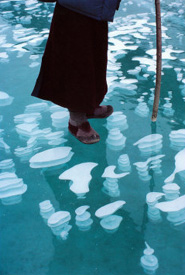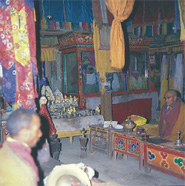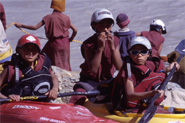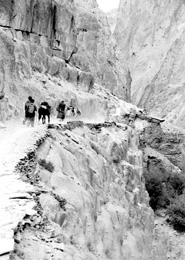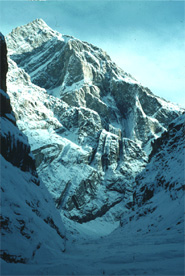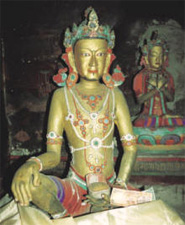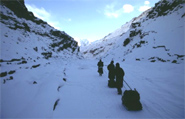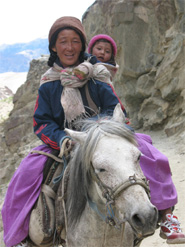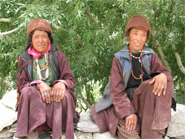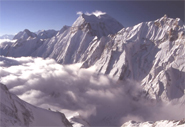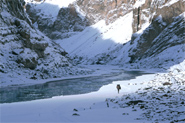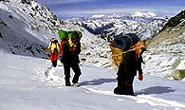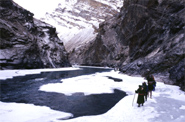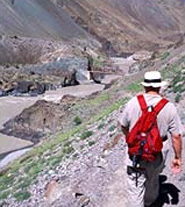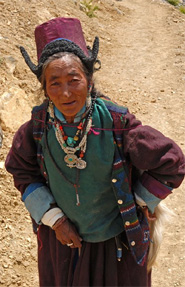|
Enjoy a 29 day tour from Delhi
Day 1: Arrive Delhi.
You arrive in Delhi by International flight. Our representative would assist you at the airport and to hotel for check-in.
Day 2: Delhi – Leh
Early morning transfer to Domestic Airport to connect the flight for Leh. Upon arrival at Leh Airport our representative would assist you at the Airport and transfer to Hotel. Check in to the hotel. Rest of the day for rest for acclimatization. Later in the afternoon a walk around Leh town (3500m) includes a visit to Leh Market, Leh Palace, Shanti Stupa & Leh Gompa – This walk shall help us in a getting acclimatized at this height. Overnight stay at the hotel.
Day 3: Leh Sightseeing
Morning fee in Leh. Afternoon visit Leh Palace, Shanti Stupa & Leh Gompa. Overnight stay at the hotel.
Day 4: Leh Sightseeing
Today we proceed for Indus Valley monastery tour. We start with a visit to Shey, the ancient capital of Ladakh. The monastery here has a huge gold-gilded statue of Buddha Sakyamuni with a large silver lamp burning in front of the statue. Then we visit Thiksey Gompa, an impressive complex rising tier upon tier on a hill above the village. The monastery has a beautiful 30 m high gold-plated statue of Maitreya Buddha, the Buddha of the future. Drive further to visit the famous Hemis Gompa, founded in 1630's by Stagtsang-ras-pa under the royal patronage of Sengge Namgyall. Hemis is one of the largest and richest gompas of Ladakh. The two-day festival of monastic dance in June-July has raised the reputation of Hemis particularly high. The festival is dedicated to Guru Padmasambhava, popularly known as second Buddha and responsible for spreading Buddhism in the Tibetan world. Later we visit the Stok Palace, the Royal residence of the King of Stok & the Museum that has a rich collection of Ancient Ladakhi artefacts including old Thangkas, precious stones, arms and armoury, the Queen's necklace and the crown of the King of Ladakh among others. Overnight stay at the hotel in Leh.
Day 5: Leh - Likir - Alchi - Lamayuru (5 hours drive)
We drive to Likir and visit Likir gompa situated atop a windy cliff top overlooking the beautiful village of Likir. It was founded in the 12th Century although the present construction dates back to the 18th century as the original one was destroyed by fire. In its courtyard is a yellow colored 3 storey high mammoth statue of the Lord Buddha, which was constructed by a resident monk. The top floor has an impressive museum containing old thangkas and weapons used many centuries back. Then we drive and cross the River Indus and reach Alchi, Ladakh's most loved monastery. Over a century old, its wall paintings are very similar to those of the Tabo gompa in Spiti, Himachal Pradesh. Unlike other monasteries which are usually on a cliff top or cling to a mountainside, Alchi is at ground level and is nestled in the shade of a garden. Finally we reach Lamayuru monastery, founded by Rinchen Zangpo in the 10th century. This gompa is located amidst the massive mountains. The spectacular setting of this gompa and its renowned collection of carpets, thangkas and frescoes has been attracting many people over a long time. It is believed to be the oldest in central Ladakh. Overnight stay in Lamayuru.
Day 6: Lamayuru - Wanla (3 to 4 hours trek)
We pack our small backpacks, watch the horses get ready, and set off for this first day of our adventure. A gentle trail leads up to the small pass of Prinkti La (3750m) before heading down to the village of Shilla and the last 3 km to Wanla (3250m). Here we set up camp for the night and spend the afternoon relaxing in the sun or exploring the gompa in Wanla, before we gather around for a good dinner.
Day 7: Wanla - Hanupatta (6 hours trek)
An easy walk towards Phansila (3410m) will lead us to a beautiful valley. From here we descend a pass beyond which the valley starts to narrow, with mountains towering above our heads and the Zanskar River making its way deep down in the gorge. In this barren, harsh landscape, beautiful rosebushes give your senses an unforgettable experience. We camp close to the river, just after the village of Hanupatta (3760m), where we have a great view down the valley.
Day 8: Hanupatta - Sir Sir La 4850m - Photoskar (6 to 7 trek)
We follow the river and the wide valley up for some time before we cross the river and start the long and gradual ascent to Sir Sir La (4850m). From the top of the pass we can get panoramic view of the main Zanskar range as well as our next pass, the Singge La (5090m). It is another 2 – 2 ½ hrs of walk down to the village of Photoskar (4200m), situated in the cliffs of mountains virtually piercing the sky and surrounded by green fields. The trail towards Sumdo disappears in the deep gorge down to the right of the village. We spend the night close to the village and enjoy a well-deserved rest.
Day 9: Photoskar - Singge La 5090m - Foot of Singge La (7- 8 hourrs trek)
After crossing the small pass of Bumiktse La (4200) this morning, we enter the broad and lush Photang valley. A gentle trail leads us through this beautiful landscape, where villagers graze their yak/dzo and horses. One of the most fascinating things about the Zanskar trek is the ever-changing landscape. Every time you turn a corner, or cross a pass, a new world appears in front of you. Passing through the deepest of gorges and meandering through the greenest of fields, the majestic Zanskar River assumes a fascinating form and life of its own. With colors and shadows changing with the sun, one never gets bored! Slowly we ascent towards Sengge La ( 5090m), or the "Lion Pass". The last few meters are steep, but will give us an incredibly rewarding view on the top. From the pass it is an easy walk down to our campsite.
Day 10: Foot of Singge La - Lingshed (5 hours trek)
We follow the trail high above the Zanskar River; the mountains take a greener and gentler formation, before we descend from Kiupa La (4400 m) down the steep zigzag trail to the villages of Gongma (3840m) and Skiumpata. From here we climb up a gentle trail to the Margum La (4400m), from where we can see Lingshed an hour or so away. The campsite in Lingshed is just by the monastery belonging to the Gelugpa order and housing around 60 monks. The village itself is spread out over a big area, enclosed in green fields of barley.
Day 11: Lingshed - Snertse via Hanuma La 4950 m (8 hours trek)
A long day, we walk through the green fields of Lingshed early in the morning. It takes some ups and downs before we reach the base of the Hanuma La (4950m), from where we start climbing the many steep zigzags that lead to the top of the pass. The walk down is gentle before we enter a rocky, spectacular gorge and soon the valley flattens out, the trail following a lush riverbed with rosebushes. Just above the campsite of Snertse, there is a herders' camp, and sometimes, fresh cheese, milk and curd is available here. Down in the riverbed it is possible to go hunting for fossils. The locals sometimes show nice collections of their findings. When the Indian plate slammed into the stationary mass of Asia some 50 millions years ago, the Great Himalayas were formed from the base material of the Indian plate. The Zanskar range consists of layers of sediments from the ocean floor and the Ladakh range is granite born out of the immense heat generated by the friction between the two plates.
Day 12: Snertse - Hanumil via Purfi La 3950 m (5 hours trek)
Today we head for another pass: Parfi La (3950m). A short walk after Snertse, there is a wonderful lookout from where we can see the pass and, down the valley, the Oma Chu River. We follow the trail 500m down the valley, cross the bridge and start on the juniper covered zigzag trail up to Parfi La. Red alert! If fortune strikes, we may come across a rare species of the Himalayan region: the majestic brown bear. We may also see herds of attractive Himalayan blue sheep. Here we walk down to the banks of the Zanskar River and follow it all the way to the village of Hanumil (3380 m), where we will camp for the night.
Day 13: Hanumil - Pishu (4 to 5 hours trek)
We will start with an easy walk on plain and barren land along the Zanskar River and follow it all the way to Pishu (3470 m), passing Pidmo (3420m), an exotic landlocked hamlet of 8-9 families leading a simple traditional life. Pishu is located on the west side of the Zanskar River and opposite of Zangla (formerly a tiny kingdom). Here we will come across a 55m hanging bridge, the longest on Zanskar River. Our day will end at a lush green campsite with a spring situated nearby where we can quench our thirst.
Day 14: Pishu - Karsha (4 to 5 hours trek)
After a hearty breakfast we will begin our day with another effortless stride towards our next destination. From Pishu the trail ascends gradually to Rinam (3550m) along the bank of the Great Zanskar River. We will have a view of the stunning monastery of Tongde. Once reaching Karsha (3600m), we can reinvigorate ourselves at the bank of Zanskar River. Karsha monastery: Karsha monastery is one of largest monasteries of Gelukpa sect, located on a hillside with an imposing view of the entire valley. Believed to have been founded around 10th century A.D, a visit to the monastery to get its blessing is recommended.
Day 15: Karsha - Padum 3531 m (2 hours trek)
We will follow the route to Pipiting village on the dusty road from Karsha. Padum is the major hub of activities of the entire valley. The villagers gather here on every auspicious occasion. It is also a place to purchase our food supply for the remaining trekking days. The day can be used for sightseeing the famous Sani Gompa, located at a distance of 4 hours both ways. The Kanika Chorten, the oldest Stupa in the entire Ladakh region (dating from the first century BC) stands in the courtyard of Sani Gonpa, belonging to Drukpa Kagyud sect of Tibetan Buddhism. Or simply stroll around the village or visit the nearby monasteries of Pipiting and Stakrimo.
Day 16: Padum - Mune (6 hours trek)
From Padum we continue along a dusty Jeep track. En route, we'll come across Shila and Bardhan villages. Bardhan is known for its valley monastery (3620m), which is closely associated with the Drukpa order of Hemis monastery. It is also famous for its huge and beautifully engraved (mantras) prayer wheels. From Bardhan it will take another 2-½ hrs (approx.) along the Tsarap River before we turn off to the Kangla, and mount to a plateau and the village of Mune (3900 m).
Day 17: Mune- Ichar 3650m (5 to 6 hours trek)
People consider the day ahead from Raru (3850m) onwards a bit tough. Till Raru, the dusty road trip is quite easy and relaxing. After crossing the main tributary beyond Raru, there is a short walk before a gradual descent to the main valley. Thereafter the trail begins alongside the river leading to Ichar village (3650 m), where we will camp for the night, near a dike.
Day 18: Ichar-Purne (5 to 6 hours trek)
From Ichar the trail is sometimes quite tricky for the horses, but it's really thrilling to be in the magnificent gorge. En route there are many climbs and falls as we cross some small side rivers leading to Surle and Cha village. From Cha, walking along the river amidst greenery till the crossing of the bridge with the mystical tune of flowing rivulet drives the exhaustion away. We will camp at Purne village (3700 m).
Day 19: Purne- Phuktal - Purne (4 hours trek) Side trip
The trail to Phuktal (3850 m) follows the right bank of the Tsarap River and enters splendid gorges for sometime before reaching a makeshift bridge. After a short walk we will come across a small plateau with sprinklings of chortens and prayer flags. Here we'll have an amazing view of Phuktal monastery, one of the most fabulous sights in the Zanskar valley. The sight of the monastery leaves a lasting impression due to its unique creation. It is on alimestone cliff, with the main assembly hall carved out of a huge cave and the monks' residences scattered down the hillside. The spring that gurgles deep in the cave is still out of bounds for women. Inside the monastery there is an inscription of Cosma de Koros (the Hungarian historian, 1825-26), one of the first Europeans to visit the Zanskar region. After visiting the monastery, we'll come back to Purne for an overnight of rest.
Day 20: Purne- Tabley (6 hours trek)
Now it's time for us to start a fresh venture with the crossing of the bridge in the gorge. Before the steep ascent to the huge fertile plateau of Tetha village (3980), we keep to the trail along the right bank of the river. An excellent path with a minor climb and descent marked by a progression of well-maintained stupas of the village of Kuru (3990), a major center for livestock breeding. After Kuru the trail descends back to the right side of the riverbank toward the village of Tanze (3850m). From Tanze, it's an easy short walk to the route that joins up with hiking tours Darcha-Padum by the Baralacha & Phirtse la.
Day 21: Tabley - Lakung (7 to 8 hours trek)
The trail from Table gradually ascends to the village of Kargyak (4050m) on the left bank, the highest permanent settlement in the Zanskar region. We climb up easily towards a majestic rock tower known as Gonpo Rangjung. After passing the awesome rock-face, there are plenty of passages to the upper reaches of the Kargyak River. The path then heads to the beautiful yak grazing pastureland known as Lakung (4470 m). This is one of the most rewarding places for encampment.
Day 22: Lakung - Ramjak 4290m ( 6 to 7 hours trek)
Today, we'll have good breakfast to generate extra energy to meet the challenge of Shingo pass (5090m). Though not tough by Himalayan standards, it is a trying one and can be accomplished in a couple of hours. The gradual ascent leads to the top of the pass. The view can leave us aghast with its panoramic scenery, a backdrop of 6000 mtr snow-capped peaks defining both the main Himalayas and the Baralacha Range. A series of prayer- flags mark the Shingo la. The descent path is easy and well trodden. It starts with a small steep route leading to a slope to the right side of the valley, passes shepherds' huts at Chumik (4640m) and a further descend leads to the meadowland campsite of Rumjak (4290 m).
Day 23: Rumjak - Pallamo (5 hours trek)
We continue on the right bank of the river, where the descent is rather gradual until the last section of the Zanskar Sumdo (3860m). Before reaching Zanskar Sumdo, the path is easy; but we need to be alert of the steepness. After a steep descent at the intersection, we cross the river on a manned pulley bridge. Further on, the trail runs along the far bank towards boulder fields until Pallamo. There, we will camp for the last night of our trekking, ending our thrilling adventure on prepossessing greenery.
Day 24: Pallamo - Darcha 3350m (3 hours trek)
Hurray! Today we will commence the easiest and shortest hike on this adventure. We will pass the village of Rarig (3430m) down the valley, continuing in a spectacular gorge along a dusty path until the final count down to Darcha.
Day 25: Darcha - Rohtang Pass (3978m) - Manali (7 hours Drive)
Today, we'll take you to Manali. We drive for about 145 kms through the fascinating Himalayan tracks to arrive at Manali, one of the most beautiful spots in Himachal. On arrival, you check in at your hotel and stay overnight.
Day 26: Manali
Breathe in the fresh mountain air of Manali, the most famous hill resort in Himachal Pradesh. the pine covered slopes, the panoramic mountain vistas, the gushing waters of the Beas river. Overnight at the Hotel
Day 27: Manali - Delhi ( 570 Km / 12 hours drive)
Early morning at 0600hrs we start our journey to Delhi via Chandigarh. Arrive Delhi by late evening and check in at your prearranged hotel for overnight stay.
Day 28: Delhi
Morning at leisure and later in the afternoon we depart for Delhi sightseeing that includes Red Fort, Humayun's Tomb, Lotus Temple and Qutub Minar. Later we drive back to hotel for overnight stay.
Day 29: Delhi departure
BOOK YOUR TOUR |
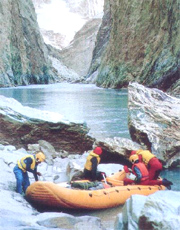
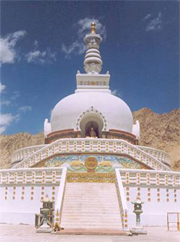
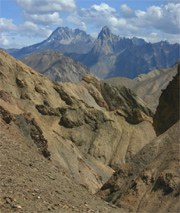
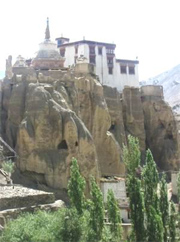
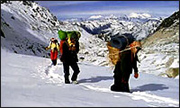
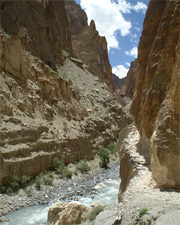
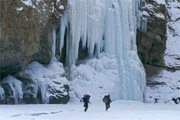
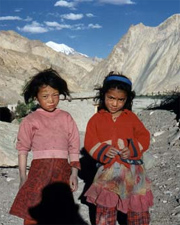
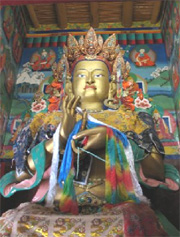
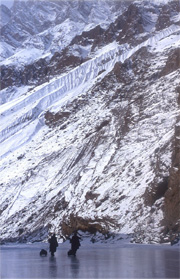
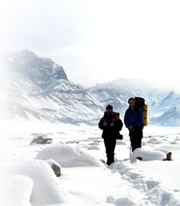
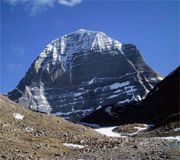
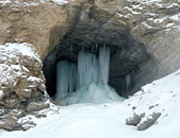
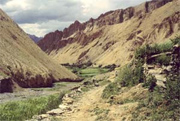
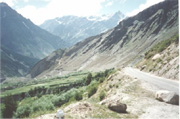
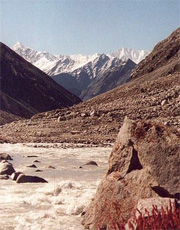
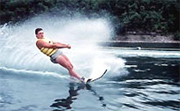 |









